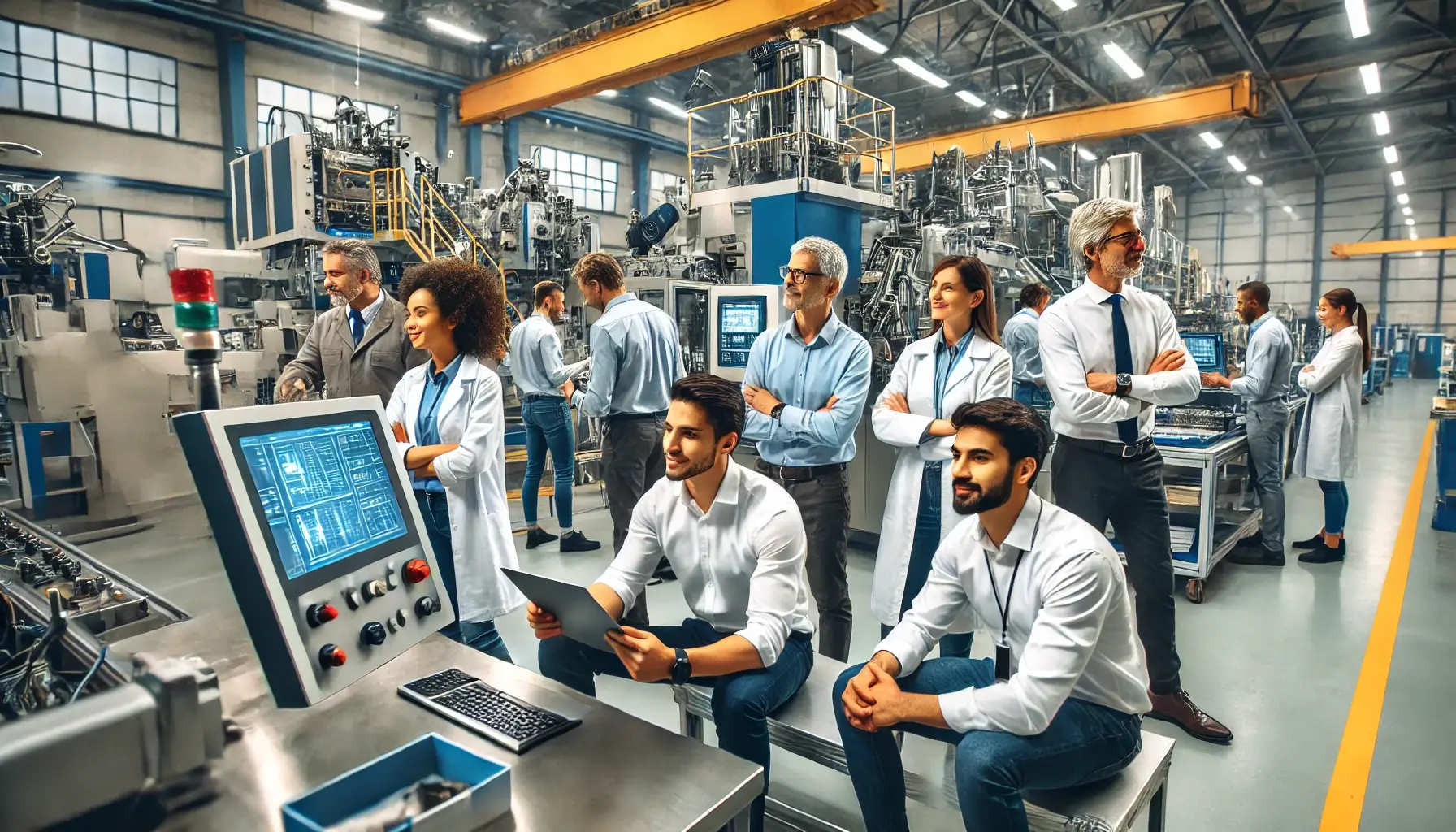Investment in Human Capital: Key to Productivity and Growth

Introduction

Human capital is a fundamental element in driving economic growth and enhancing the competitiveness of nations. This concept encompasses the collective skills, knowledge, and abilities of individuals, which can be harnessed to foster development and innovation. Investing in human capital involves enhancing education, improving health, and providing training, all of which contribute to the overall productivity and efficiency of the workforce.
The significance of human capital cannot be overstated. It is a key driver of economic development, enabling countries to achieve sustainable growth and prosperity. By investing in their people, nations can build a more skilled and adaptable workforce, ready to meet the challenges of a rapidly changing global economy.
In this article, we will explore the concept of human capital, its importance in economic growth, and the various strategies for investing in it. We will also examine the benefits of these investments, the potential risks and challenges, and how to measure the success of human capital investments. This comprehensive guide aims to provide valuable insights into the critical role of human capital in today's world.
What is Human Capital and Why is it Important?
Understanding the Concept of Human Capital
Human capital refers to the collective skills, knowledge, and abilities possessed by individuals, which can be utilized to drive economic development and enhance productivity. This concept emphasizes the value of investing in people to improve their capabilities and contributions to the economy.
Importance of Human Capital in the Economy
Human capital is vital for economic growth as it directly influences productivity and innovation. A well-educated and skilled workforce can adapt to new technologies and processes, leading to increased efficiency and economic development. Countries that invest in human capital see higher levels of economic growth and prosperity.
The Role of Human Capital in Economic Growth
Human capital plays a significant role in fostering economic growth. Investments in education, health, and training enhance the workforce's capabilities, leading to higher productivity and economic output. Here are some key points on how human capital contributes to economic growth:
- Enhanced Education: Improved education systems produce a more knowledgeable and skilled workforce.
- Better Health: Healthy individuals are more productive and can work more efficiently.
- Increased Training: Continuous training and development help workers adapt to new technologies and methods.
- Higher Productivity: A skilled and healthy workforce leads to increased productivity and economic output.
- Robust Economies: Countries with high levels of human capital tend to have stronger economies and higher standards of living.
Examples of Human Capital
Human capital comes in various forms, including education, skills, and health. Investing in these areas can lead to significant economic benefits. For instance, countries that prioritize education often see higher rates of innovation and economic growth.
For further reading on human capital, you can refer to Worldbank.org.
How to Invest in Human Capital?

Key Strategies for Human Capital Investment
Investing in human capital is essential for economic growth and development. Here are some key strategies:
- Education and Training: Providing quality education and continuous training helps develop a skilled and adaptable workforce.
- Health and Well-being: Ensuring access to healthcare and promoting healthy lifestyles contribute to a more productive and efficient workforce.
- Workplace Learning: Offering on-the-job training and professional development opportunities keeps employees' skills current and relevant.
For more on investment strategies, you can visit Richiest.com.
Investment in Education and Training
Education and training are fundamental to human capital development. They provide individuals with the skills and knowledge needed to succeed in the workforce. Examples of successful education investments include:
- Public Education Systems: Strong public education systems provide a foundation for lifelong learning.
- Vocational Training: Programs that focus on specific trades and skills help meet the demands of the job market.
For more information on investing in education, refer to Investopedia.com.
Building Human Capital through Health and Well-being
Health is a critical component of human capital. A healthy population is more productive and can contribute more effectively to the economy. Strategies to improve health as an investment in human capital include:
- Healthcare Access: Ensuring that everyone has access to essential healthcare services.
- Preventive Care: Promoting preventive measures to reduce the incidence of diseases.
For additional insights, check Richiest.com.
What are the Benefits of Investing in Human Capital?

Impact on Productivity and Efficiency
Investing in human capital significantly boosts productivity and efficiency. A well-trained and healthy workforce can perform tasks more effectively, leading to higher output and better quality of work. This investment not only enhances individual performance but also improves overall organizational efficiency.
For more on productivity improvements, you can check Richiest.com.
Relationship between Human Capital and Innovation
Human capital is closely linked to innovation. A skilled and knowledgeable workforce is essential for developing new ideas and technologies. Companies that invest in their employees' education and training are more likely to foster an innovative culture. This investment leads to breakthroughs and advancements that can propel a company ahead of its competitors.
For further reading on the impact of investing in people, visit Campuspress.yale.edu.
Economic Growth and Prosperity
Investing in human capital contributes to broader economic growth and prosperity. As individuals gain skills and knowledge, they can contribute more effectively to the economy. This increased productivity leads to higher economic output, which in turn fosters economic development and prosperity. Countries that prioritize human capital investment tend to experience faster economic growth and improved living standards for their citizens.
Investing in human capital is a strategic approach that yields significant benefits, including increased productivity, innovation, and economic growth. By focusing on education, training, and health, nations and organizations can build a more capable and competitive workforce.
What are the Risks and Challenges in Human Capital Investment?
Understanding Human Capital Risk
Investing in human capital comes with certain risks. These can include:
- Skill Mismatch: Training may not always match job market needs.
- Economic Fluctuations: Economic downturns can reduce the return on human capital investments.
- Attrition: Employees may leave for better opportunities, taking their skills with them.
Challenges in Measuring Human Capital
Quantifying human capital is complex due to various factors:
- Intangible Assets: Skills and knowledge are difficult to measure accurately.
- Diverse Metrics: Different industries require different metrics, complicating standardization.
- Data Availability: Reliable data on education, skills, and health can be hard to obtain.
Examples of Human Capital Risk
Real-world examples highlight the risks involved in human capital investment:
- Skill Gaps: Rapid technological changes can create skill gaps, making existing training programs obsolete.
- Brain Drain: Highly skilled individuals may migrate to other countries for better opportunities, leading to a loss of talent.
How to Measure the Success of Human Capital Investments?
Key Metrics and Indicators
Assessing the success of human capital investments involves several key metrics and indicators:
- Education Levels: The highest level of education attained by individuals.
- Skill Proficiency: The ability of individuals to perform tasks effectively.
- Health Indicators: Measures of physical and mental health that affect productivity.
- Employment Rates: The percentage of the workforce that is employed.
Human Capital Index
The Human Capital Index (HCI) is a comprehensive measure used to evaluate a country's human capital. It considers factors such as education quality, health outcomes, and overall productivity. The HCI provides a snapshot of how well countries are developing their human capital to improve economic outcomes.
Assessing the Rate of Return on Human Capital Investments
Evaluating the return on investment (ROI) in human capital involves analyzing the economic benefits gained from investing in education, health, and training. Methods to evaluate ROI include:
- Cost-Benefit Analysis: Comparing the costs of education and training programs to the economic benefits they produce.
- Productivity Measures: Assessing improvements in workforce productivity resulting from human capital investments.
- Earnings Analysis: Analyzing the increase in earnings for individuals who have received additional education or training.
For more information on investing in technology, you can visit Richiest.com.
Conclusion
Investing in human capital is essential for sustainable human development and economic growth. Human capital theory emphasizes the importance of enhancing the stock of human capital through educational investment and health improvements. Human resource management plays a critical role in managing and developing human capital, focusing on both general human capital and firm-specific human capital.
Human capital accumulation and human capital formation are key components of human resource development, driving productivity and innovation. Social capital and physical capital complement human capital, creating a holistic approach to economic development. Human capital and economic growth are closely linked, with evidence showing that higher levels of human capital lead to better economic outcomes.
Measures of human capital, such as human capital valuation and estimates of human capital, provide insights into the effectiveness of investments in human capital. Human capital management involves planning and implementing strategies to increase human capital and address human capital flight. The benefits of human capital are evident in improved productivity, innovation, and overall economic prosperity.
Examples of investing in human capital demonstrate the positive impact on individuals and societies. By focusing on human capital across different dimensions, including female human capital and the human capital of children, we can achieve more inclusive and sustainable human development. The study of human capital and its application in various contexts highlight the importance of continuous investment in people for long-term economic success.
FAQs
What is human capital investment?
Human capital investment refers to the resources allocated towards improving the skills, education, and health of individuals. These investments enhance the productivity and economic value of the workforce, leading to greater economic growth and development.
Why is investing in human capital important for economic growth?
Investing in human capital is crucial for economic growth because it leads to a more skilled and efficient workforce. A well-educated and healthy population can adapt to new technologies and contribute more effectively to the economy. This investment results in higher productivity, innovation, and overall economic prosperity.
How can companies invest in human capital?
Companies can invest in human capital through various strategies:
- Training Programs: Offering continuous education and skill development opportunities.
- Health Benefits: Providing comprehensive health care plans and wellness programs.
- Educational Assistance: Supporting employees in furthering their education through scholarships or tuition reimbursement.
What are the risks associated with human capital investment?
The risks associated with human capital investment include:
- Economic Fluctuations: Economic downturns can affect the return on investment.
- Skill Mismatch: Training programs may not always align with market needs.
- Employee Turnover: Employees may leave the company, taking their acquired skills elsewhere.
How is the success of human capital investment measured?
The success of human capital investment is measured using various metrics, such as:
- Education Levels: Assessing the highest level of education achieved by employees.
- Productivity Metrics: Evaluating improvements in workforce productivity.
- Health Indicators: Monitoring the health status of employees and its impact on productivity.